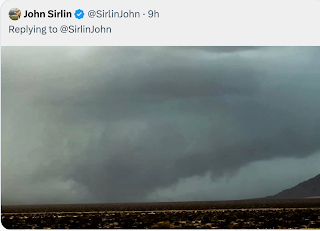Real Clear Investigations: COVID versus Climate Models
As discussed here several times, the COVID-19 models have been an utter disaster that lead to catastrophic policy choices. Historians will be writing about this for at least a century: how could they have gotten it so wrong? While every COVID death was and will be a tragedy, the United States will not have had 2.2 million deaths when this is all over.
This has led to an inevitable comparison between COVID and climate models. This atmospheric scientist will emphatically tell you there are reasons for those concerns. In theory, the climate models should be better because they are more grounded in atmospheric physics than disease models. The latter are new and, while they have uses, they merited nowhere near of a level of trust that we should have shut down the entire economy based on their output. In the hands of un-politicized scientists, they would be.
Real Clear Investigations (RCI) has produced an outstanding article comparing the two types of models and I highly recommend it in its entirety. You'll find it here.
I haven't written about model "tuning" in a few years (it has always disgusted me) and I'm glad RCI has brought it up again.
This has led to an inevitable comparison between COVID and climate models. This atmospheric scientist will emphatically tell you there are reasons for those concerns. In theory, the climate models should be better because they are more grounded in atmospheric physics than disease models. The latter are new and, while they have uses, they merited nowhere near of a level of trust that we should have shut down the entire economy based on their output. In the hands of un-politicized scientists, they would be.
Real Clear Investigations (RCI) has produced an outstanding article comparing the two types of models and I highly recommend it in its entirety. You'll find it here.
I haven't written about model "tuning" in a few years (it has always disgusted me) and I'm glad RCI has brought it up again.
In other words, the [climate] models get adjusted along the way, creating an appearance of accuracy. It’s not done chaotically, as the epidemic model revisions have been, but rather in a systematic way that has been kept somewhat undercover. The climate model revisions are called “tuning,” and were discussed in “The Art and Science of Climate Model Tuning” by Frédéric Hourdin and a dozen other climatologists in the Bulletin of the American Meteorological Society in 2017.
“[T]uning is often seen as an unavoidable but dirty part of climate modeling,” they write, “an act of tinkering that does not merit recording in the scientific literature.” The tinkering consists of “adjusting the values” of the submodels after the fact, bringing “the solution as a whole into line with aspects of the observed climate.” The tinkering is not advertised, the scientists admit, because of “concern that explaining that models are tuned, may strengthen the arguments of those claiming to question the validity of climate change projections.”
To make those adjustments, climate modelers follow theories; some use observations; some just make a “back-of-the-envelope estimate.” But it isn’t done randomly: Hourdin et al. write, “[S]ome models are explicitly, or implicitly, tuned to better match the 20th century warming.”
Yes, the climate models' forecasts are adjusted after the fact to make it appear they performed better than they actually did. The RCI essay concludes:
Whether it’s epidemiology, climate, or economics, says Sally Cripps of the University of Sydney, modelers need to “acknowledge and explain the uncertainty” in their enterprise. “The data science community in particular needs a little more humility,” she says. “It needs to hose down claims about Big Data being a crystal ball, and instead use the data to understand what we don’t know. That is the way forward.”





Comments
Post a Comment